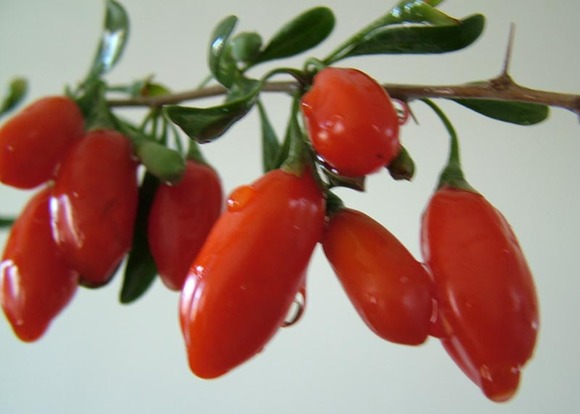| Chinese Wolfberry | |||
|
|||
|
The red wolfberry fruit, commercially called goji berry, is a precious Chinese medicinal herb, whose root, leaf, flower and stem are all good for human health. Wolfberry contains significant percentages of a day's macronutrient needs – carbohydrates, protein, fat and dietary fiber. About 68% of the mass of dried wolfberries exists as carbohydrate, 12% as protein, and 10% each as fiber and fat, giving a total caloric value in a 100 gram serving of 370 (kilo) calories. Ningxia is the most ideal place to produce red wolfberry in China and the best place of all is Zhongning County, whose wolfberry is big and rich in flesh, with less seeds but high in multiple sugars and nutrition. Cultivated along the Yellow River for more than 600 years, Ningxia wolfberries have earned a reputation throughout Asia for premium quality and are sometimes described commercially as "red diamonds". Ningxia has also developed a series of related products such as wolfberry candy, wolfberry tea, wolfberry wine, which are enjoying great popularity among consumers. Wolfberries are celebrated each August in Ningxia with an annual festival coinciding with the harvest. In the past few years, in the United States and other developed countries, wolfberries have attracted much attention for their nutrient value, leading to a profusion of consumer products. Such rapid commercial development extends from wolfberry having a high ranking among super fruits expected to be part of a multi-billion dollar market by 2011.
|
| Tools: Save | Print | E-mail |
|
| Comment |





